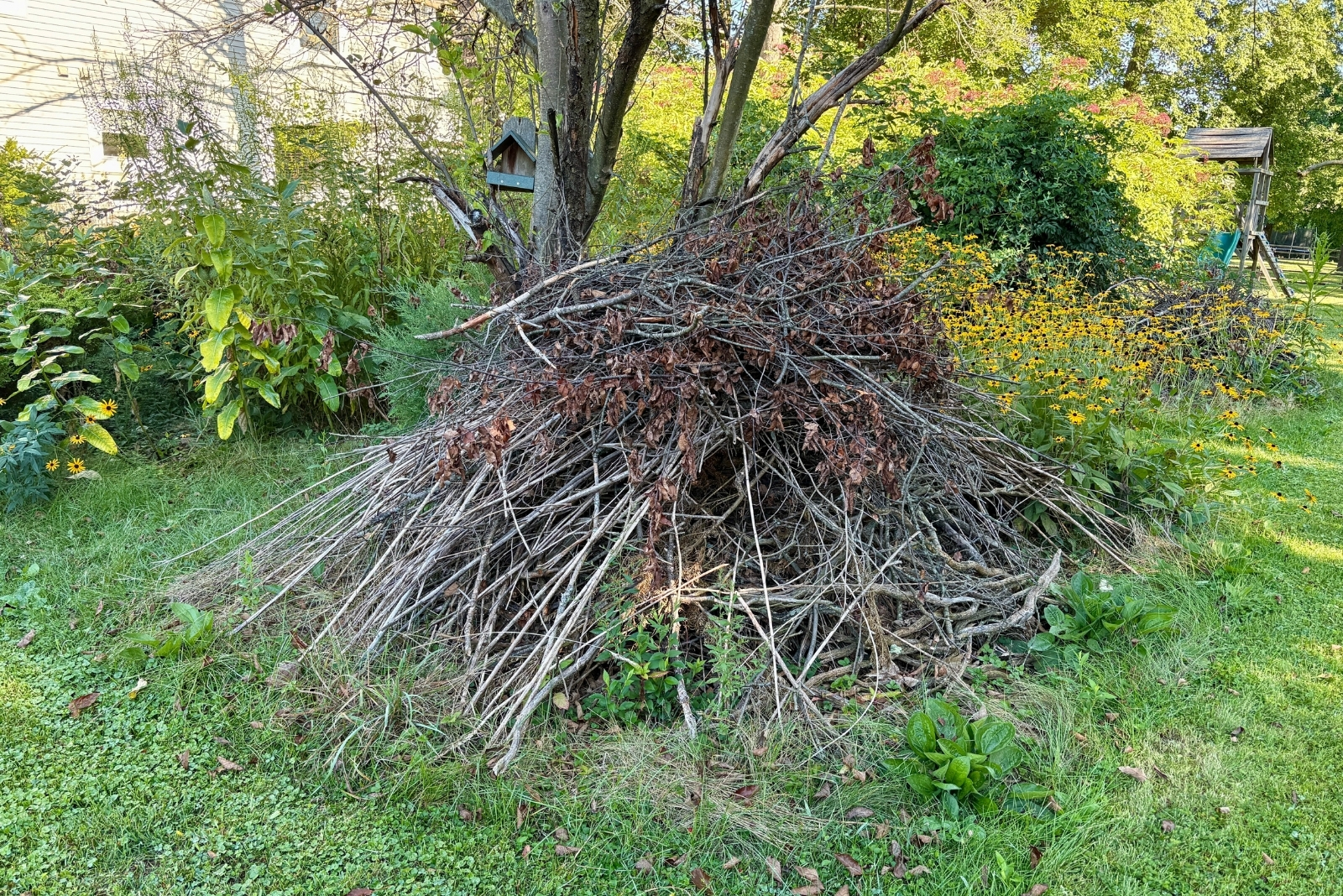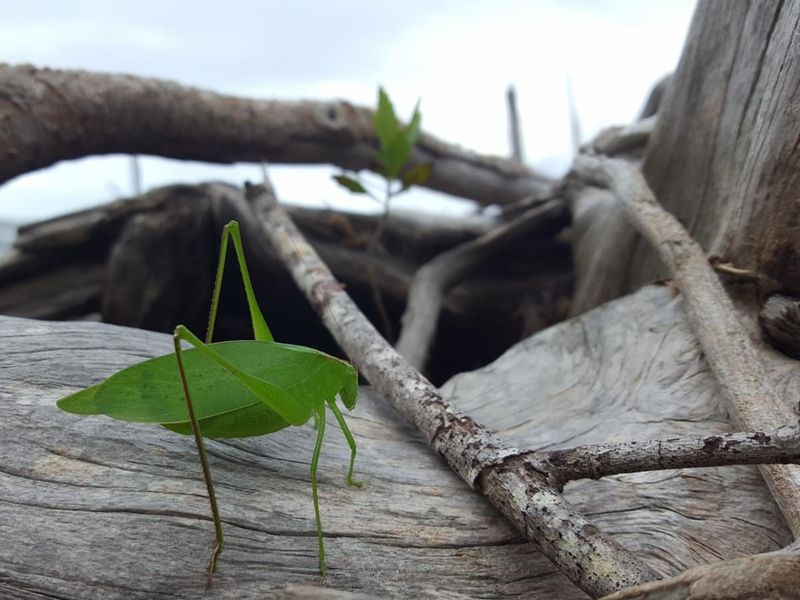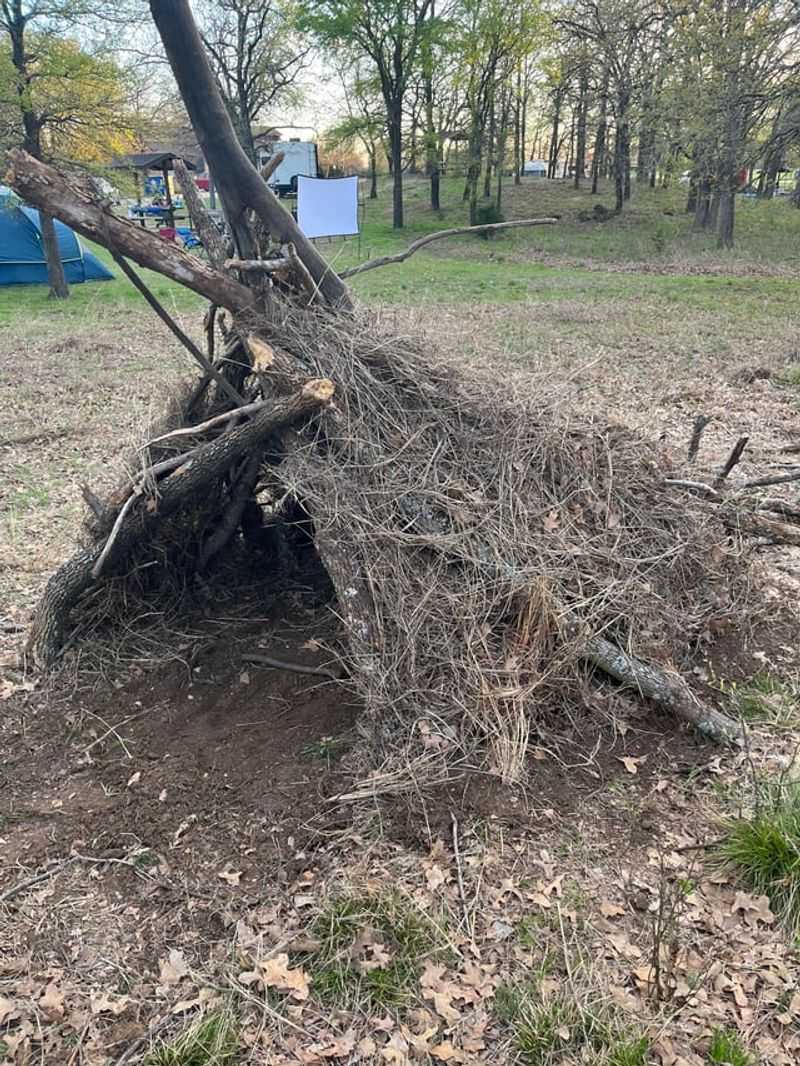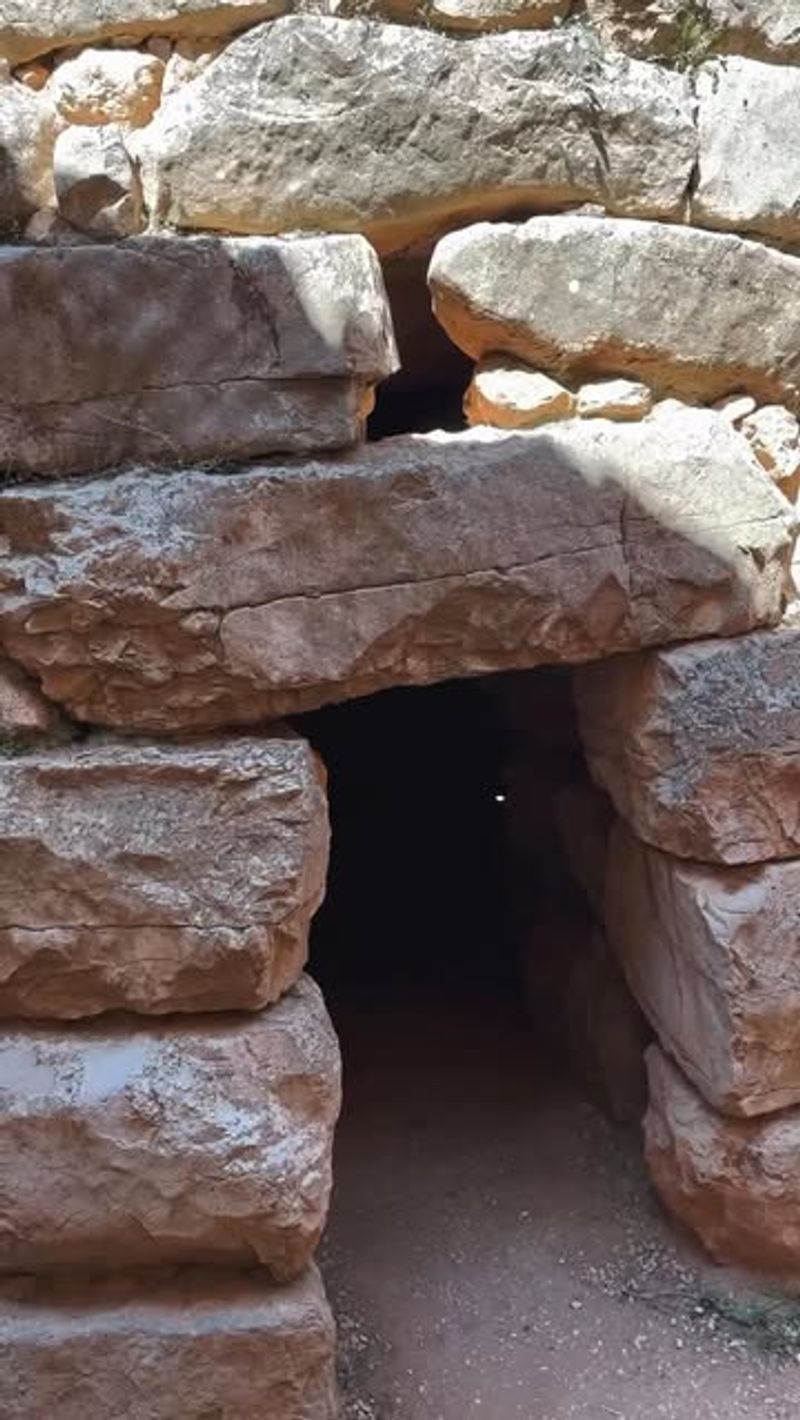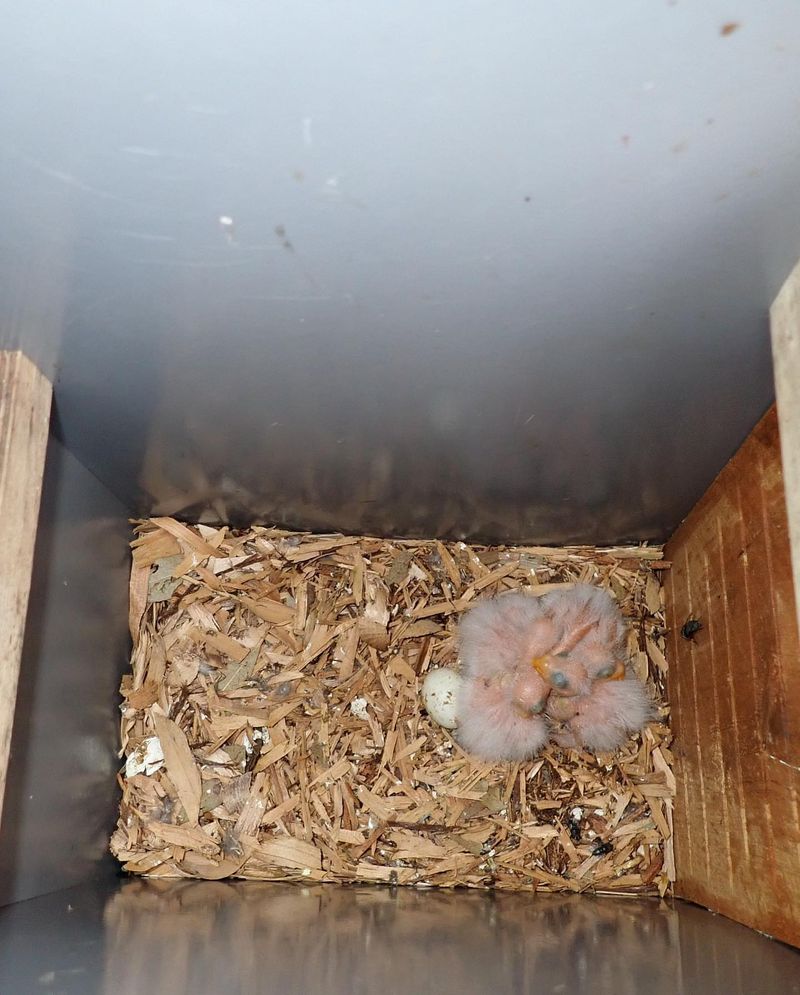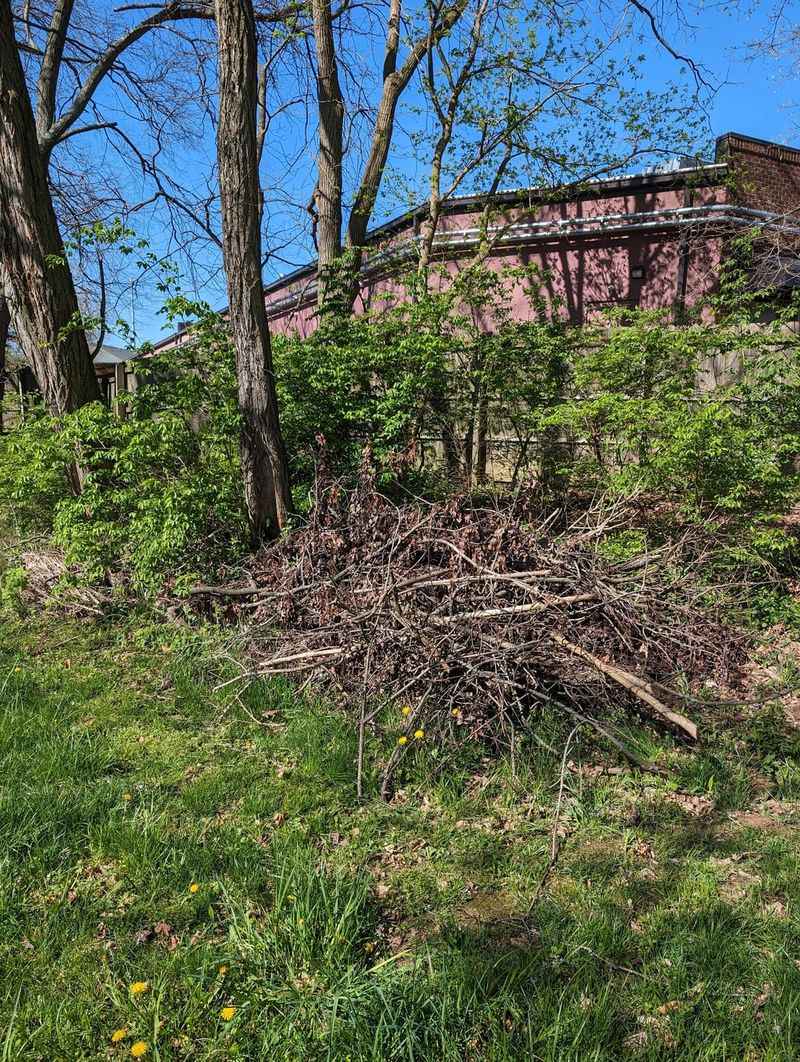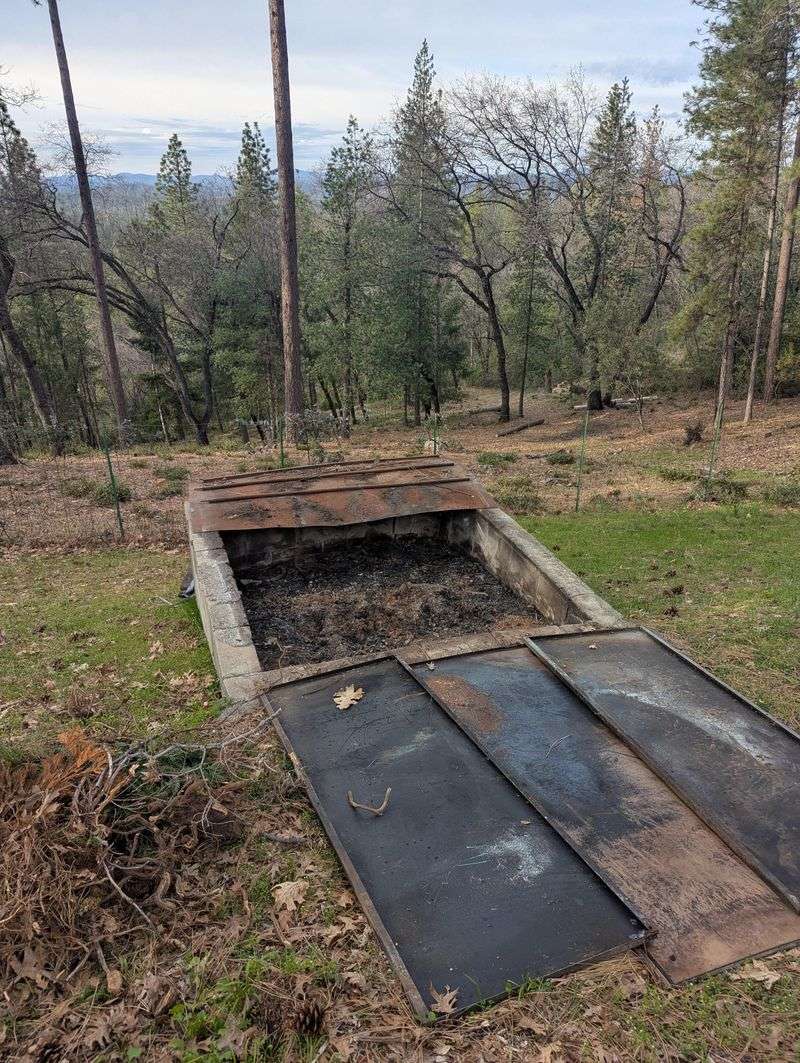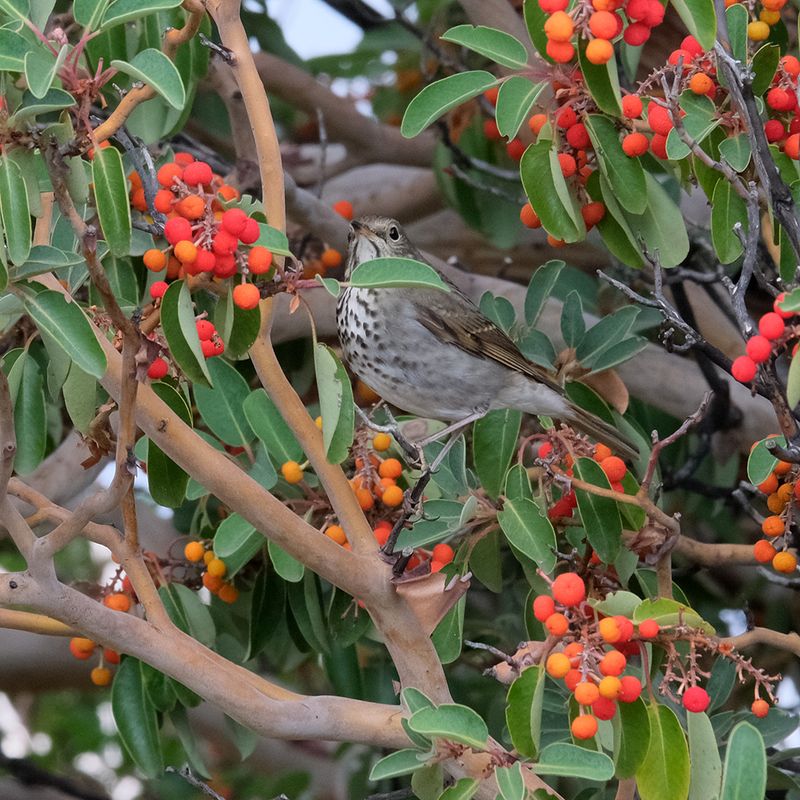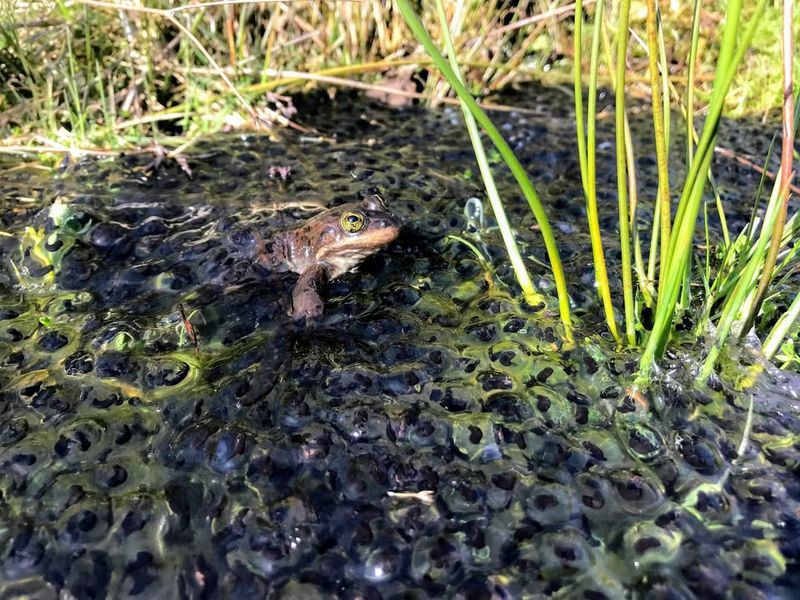Brush shelters in North Carolina aren’t just practical—they’re a haven for wildlife. These 9 designs help create spaces that encourage biodiversity.
Each style offers unique benefits to both animals and gardeners. Pick one and transform a simple brush pile into a thriving habitat.
1. Log Cabin Stack
Arranging fallen branches in a crisscross pattern creates perfect hiding spots for small mammals. Chipmunks and rabbits particularly love these structures in North Carolina’s piedmont region.
Start with larger logs as a foundation, then stack progressively smaller branches on top. Leave small gaps between logs for easy wildlife access while creating a sturdy shelter that won’t collapse easily.
2. Brush Teepee
Leaning several long branches against a central support creates a cone-shaped haven perfect for ground-nesting birds. Many North Carolina songbirds seek these shelters during nesting season.
Place smaller twigs and brush against the main structure to fill gaps. The conical design sheds rain effectively while providing excellent protection from hawks and other aerial predators common in Carolina skies.
3. Rock Base Fortress
Starting with a circle of medium-sized rocks creates drainage and prevents rot in damp Carolina soil. Salamanders and toads frequently use these shelters in the western mountainous regions.
Stack branches and brush on top of the rock foundation, leaving multiple entry points. The rock base provides cool, moist hiding spots during hot North Carolina summers while offering protection from freezing ground in winter.
4. Hollow Log Hotel
Hollow logs serve as ready-made wildlife condos that need minimal preparation. Throughout North Carolina’s diverse habitats, these natural shelters house everything from mice to woodland snakes.
Position the log in a quiet corner with one end slightly elevated for drainage. Add leaf litter around the base and small branches over the top for additional camouflage from the hawks that patrol Carolina skies.
5. Vine-Covered Mound
Piling brush into a dome shape creates a versatile shelter for numerous creatures. Many North Carolina gardeners enhance these with native vines like Virginia creeper for added coverage.
Leave a few entrance holes at ground level for easy wildlife access. As the structure settles and the vines grow, it becomes increasingly valuable to Carolina’s box turtles and other small reptiles seeking protection from both weather and predators.
6. Stump Surrounds
Tree stumps make excellent anchor points for brush shelters that benefit decomposers. Across North Carolina’s forests, these structures support vital fungi, insects, and the birds that feed on them.
Arrange larger branches radiating outward from the stump like wheel spokes. Fill gaps with smaller brush, creating a fortress that offers multiple micro-habitats while the stump slowly decomposes, feeding the Carolina woodland ecosystem for years.
7. Sunken Brush Pit
Digging a shallow depression before adding brush creates a more permanent shelter with excellent insulation. Eastern box turtles throughout North Carolina seek these structures for winter brumation.
Line the depression with leaves before adding branches in a crisscross pattern. The partially sunken design maintains more stable temperatures during North Carolina’s unpredictable winter weather shifts, giving wildlife a reliable refuge year-round.
8. Evergreen Canopy
Recycling Christmas trees or pruned evergreen boughs creates dense, protective cover. Birds throughout North Carolina’s coastal plain appreciate these shelters during winter storms and summer heat.
Layer the evergreen branches over a simple frame of sturdier sticks. The thick needles provide exceptional weather protection while offering secure perching spots for Carolina wrens and other small birds seeking safety from neighborhood cats.
9. Wetland Edge Bundle
Creating brush piles along pond edges supports amphibians vital to North Carolina’s ecosystem health. Frogs and dragonflies thrive where land meets water in these specialized shelters.
Secure the branches with biodegradable twine to prevent them from washing away during Carolina’s summer thunderstorms. Half-submerged structures provide perfect basking spots for turtles while underwater portions offer fish protection from herons common to North Carolina waterways.

